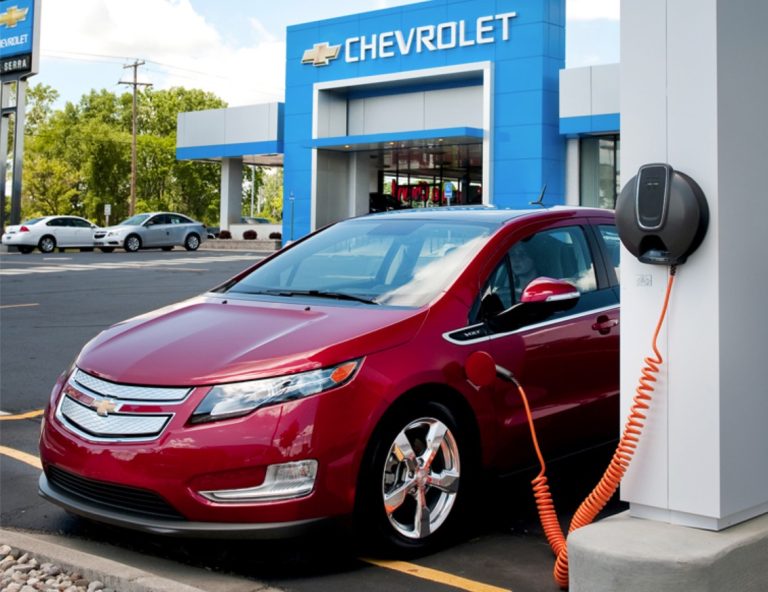

Automakers continued to push back electric vehicle (EV) targets last year as weak consumer demand hampered growth despite billions of dollars in subsidies from the Biden-Harris administration to the industry. [emphasis, links added]
Since February, many automakers have abandoned key electric vehicle targets, with Volvo, Ford and Mercedes-Benz all cutting electric quotas or abandoning previously planned product lines.
The shift in corporate strategy suggests the transition to electric vehicles — once touted by auto executives such as Ford Chief Executive Jim Farley as the future of the industry — may not be as feasible as once thought as consumers abhor EVs Lower range, lack of charging infrastructure and higher prices, Experts told the Daily Caller News Foundation.
The change in direction for the auto industry comes despite billions of dollars in subsidies being channeled to the industry through the Bipartisan Infrastructure Act of 2021 and the Inflation Reduction Act of 2022, The White House is offering a $7,500 federal tax credit for certain electric vehicles to lower costs for buyers and allocating $12 billion to automakers to retrofit factories to produce electric vehicles.
The government has also introduced strict regulations aimed at phasing out internal combustion engine vehicles, including exhaust emission rules It actually requires that about 67% of all light vehicles sold after 2032 be electric vehicles (EV) or hybrids.
“Even after you put a lot of money into electric vehicles and basically pay people to tax them to get these cars off the lot, you still have a horrible spiral: (1) There’s not enough demand to support the number of cars that are being produced, (2) OH Skinner, executive director of Consumers Union and former Arizona deputy attorney general, told DCNF.
Despite generous tax credits, Consumers have been hesitant to adopt electric vehicles at the pace the Biden-Harris administration and automakers wantelectric vehicle sales will grow by 50% in the first half of 2023 and 31% in the first half of 2024, which is lower than the 71% growth in the first half of 2022.
Additionally, a June poll by The Associated Press-NORC Center for Public Affairs Research and the University of Chicago Energy Policy Institute found that 46% of respondents are unlikely or extremely unlikely to buy an electric car, while only 21% are “very” or “extremely likely” to make the switch.
A June survey by leading consulting firm McKinsey & Company found that consumer confidence in electric vehicles is in trouble even among those who have already purchased them. Nearly half of Americans who own an electric vehicle want to switch back to a standard vehicle.
“this [EV market] The headwinds come from physical realities that translate into economic and practical realities,” Mark Mills, distinguished senior fellow at the Texas Public Policy Foundation and an expert on the automotive market, told DCNF.
“Electric vehicles are inherently more expensive…most consumers are very price sensitive; for most people, refueling an electric vehicle is far less convenient… [and] Electric vehicle fueling infrastructure is extremely expensive and takes a long time to build.
As of January, the average cost of a new electric vehicle was 10% higher than the price of a standard vehicle, with the 2024 electric version of the base Ford F-150 costing about $20,000 more. The Ford F-Series is the best-selling car in the United States in 2023.
Ford canceled plans to build a three-row electric SUV in August and reduced production of the F-150 Lightning pickup truck in January.
Ford will lose $4.7 billion on electric vehicles in 2023, equivalent to Each electric car sold costs nearly $65,000. Reached by phone, a Ford spokesperson responded to DCNF's previous comments and said: “We will not release a vehicle unless it can become profitable within 12 months of release.”
In addition to the lack of infrastructure, charging is inconvenient for consumers, with charging times ranging from 20 minutes to 50 hours…
“These costs are staggering for American families,” Diana Furchtgott-Roth, director of the Center for Energy, Climate and the Environment at the Heritage Foundation, told DCNF.
Electric vehicle manufacturers Tesla and Lucid also ran into trouble last year, announcing plans to cut about 10% and 6% of their workforce respectively.
Beyond sheer cost, scaling charging infrastructure is also a challenge for manufacturersthe Biden-Harris administration has just been formed [eight] Electric vehicle charging stations in four states by April 2024 This is despite the bipartisan infrastructure bill earmarking $7.5 billion to create a national electric vehicle charging network.
Lack of demand, union demands, and diversity, equity, and inclusion initiativesthe Department of Transportation requires applicants to commit to “intentional outreach to underserved communities” by hosting “neighborhood block parties” to qualify for funding. Greatly slowed down the rollout of the project.
In addition to a lack of infrastructure, charging is also inconvenient for consumers. Charging time ranges from 20 minutes to over 50 hours, depending on charger voltage and battery size, According to US automotive resource company Edmunds.
Even a “fast charge” in downtown Washington, D.C. can take up to 35 minutes.
Faced with these obstacles, Volvo Cars abandons plan to offer all-electric lineup by end of decadeInstead, the goal is for 90 to 100 percent of cars to be fully electric or plug-in hybrids by then.
Mercedes-Benz made a similar announcement back in February, After net profit fell 21.5% annually in the fourth quarter of 2023, the company slashed its target of selling 100% electric vehicles by 2030 to 50%.
Read the break from The Daily Caller
